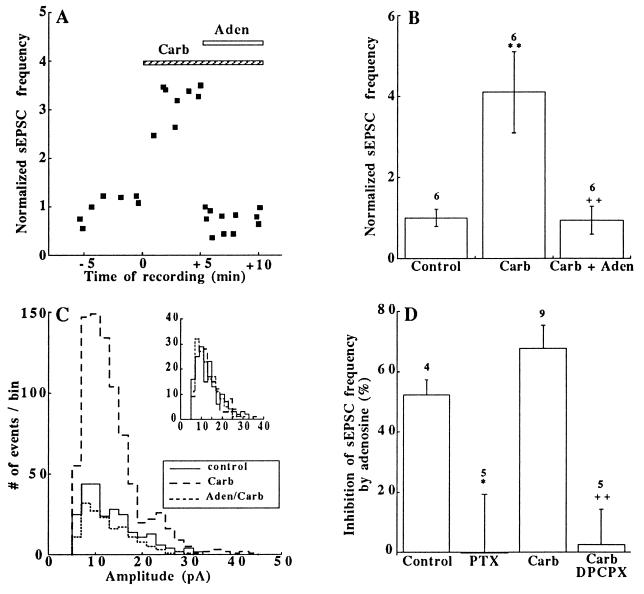Figure 4.
Adenosine suppressed the carbachol-induced increase in sEPSC frequency. (A) Time-course of adenosine (Aden) action on sEPSC frequency after carbachol (Carb) application. (B) Normalized sEPSC frequencies in control (n = 1), 5 min after the addition of carbachol (Carb, 200 μM) and 5 min after the addition of adenosine (50 μM) in a carbachol-containing medium (Carb + Aden). ∗∗, P < 0.01 (vs. control); ++, P < 0.01 (vs. Carb). The number of cells tested is indicated above each bar. (C) Amplitude distribution histograms of sEPSCs sampled for 22.2 s before (——), after the addition of 200 μM carbachol (– – –), and in the presence of carbachol + adenosine (50 μM) (⋅⋅⋅⋅⋅⋅). (Inset) Histograms with an equal number (n = 156) of sEPSCs in each case; bin size 2.5 pA. (D) Inhibition (%) by adenosine (50 μM) of the sEPSC frequency; control: adenosine alone; PTX: after PTX treatment (150 ng/ml for 14–23 h); carbachol: after carbachol (200 μM) treatment; Carb, 8-cylcopentyl-1,3-dipropylxanthine: after treatment with carbachol (200 μM) and the A1-adenosine blocker 8-cylcopentyl-1,3-dipropylxanthine (5 μM). ∗, P < 0.05 (vs. control); ++, P < 0.01 (vs. Carb). The number of cells tested is indicated above each bar.

